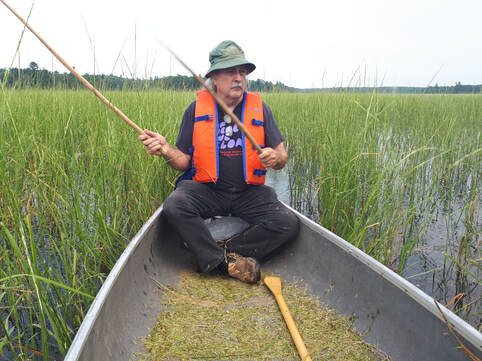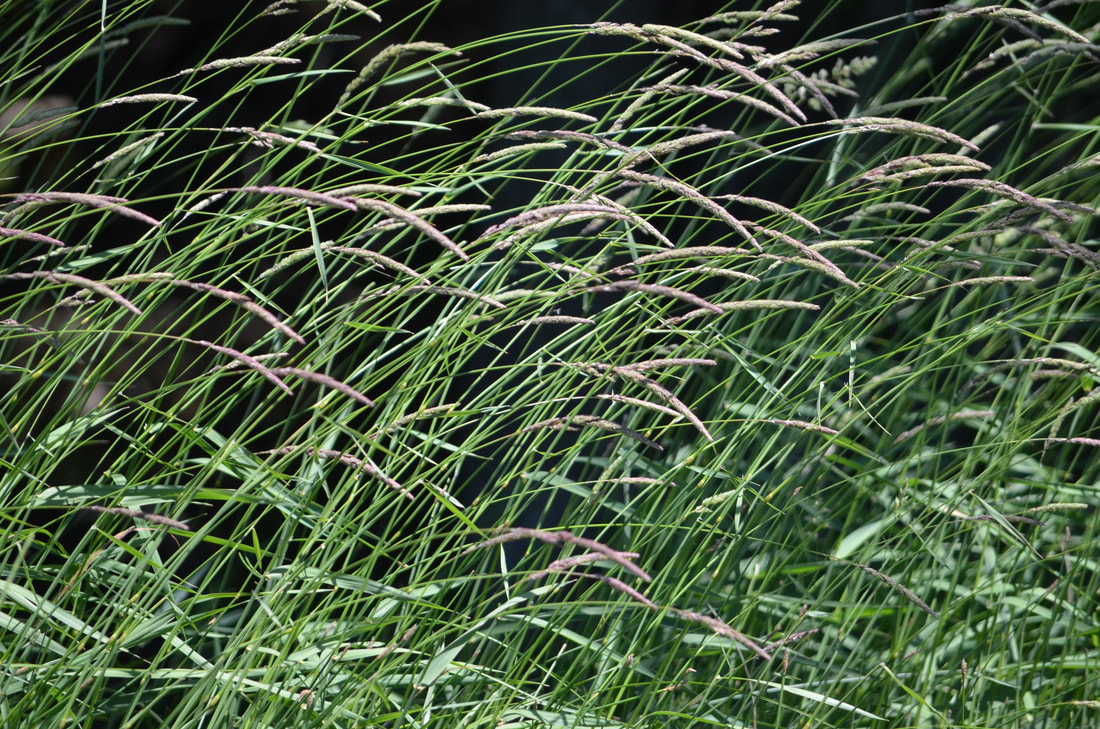Manoomin - Wild Rice
Wild rice is Canada’s only native cereal. It is a wild grass that grows from seed annually and produces a very valuable grain that has been used by the First Nations people from parts of North America, as food, for thousands of years. The natural rice bowl extends over an area west of Lake Superior to Southern Manitoba, Ontario and into adjacent states of Minnesota, Wisconsin, and Michigan. Many lakes and rivers have received their names from the presence of wild rice within them; the most well known is Rice Lake in Ontario, part of the Trent-Severn Waterway, which is possibly the largest of these waterbodies in Canada. In September, during the rice-harvesting season, muskrat, fish, ducks, geese, and migratory birds can be found in Rice Lake by the thousands. Wild rice filters the waters, binds loose soils, provides protection from high winds and waves along the shorelines, and provides habitat for species at risk, such as least bittern and black terns.
The entire wild rice plant provides food in the summer for herbivores such as Canadian geese, trumpeter swans, muskrats, beavers, white-tailed deer, and moose. In addition to this, rice worms and other insect larvae feed heavily on natural wild rice. These then provide a rich source of food for small marshland birds. The stems of wild rice provide nesting material for such species as common loons and muskrats. Every stage of growth of natural wild rice provides food and habitat for wildlife; as a result, wild rice stands provide exceptional breeding and nesting areas for an abundance of species.
The life cycle for wild rice is simple. In the late summer, the ripened seed drops off the stem and sinks to the sediment, where it remains dormant until the following spring. Low oxygen levels and warmth typically stimulate germination, but some seeds may remain dormant for five years or longer, which allows the rice to survive occasional crop failures. After germination, there are three distinct growth phases that occur. The seed first begins to sprout in early May when the water temperature reaches about 45 degrees Fahrenheit. For the first three or four weeks of growth, the young plants are under water, which is the defining characteristic of the submerged leaf stage. Then, as the long, thin leaves begin to float on the surface of the water, this becomes the floating leaf stage of growth. Finally, the rice will then grow up out of the water into an upright position to reach the stage of growth in which it is a mature wild rice plant. Wild rice has a growing season of 106 to 130 days, but climate change is starting to have a serious impact of the growing cycle of this staple plant.
Shoreline development is, and continues to be, another major threat to wild rice. People with cottages and houses where the rice is growing tend to uproot the rice plants, apply for chemical control permits, build docks, and use mechanical dredging for the removal of the rice. Monitoring from the water level is also an essential component in creating thriving rice producing water-bodies.
Throughout 2018-2020 Plenty Canada worked on an initiative that helped to replenish and monitor the growth of wild rice in our area in collaboration with Environment Canada’s National Wetland Conservation Fund. Through this work, Plenty Canada has seeded rice along the Mississippi River at McCulloch’s Mud Lake, just outside of our headquarters in Lanark, ON as well as in Rice Lake in Alderville, ON. Our work on this project involved monitoring the growth conditions of the rice as well as monitoring and assessing the overall health of the wetland habitats that the rice supports. We are currently exploring avenues to continue our work to preserve this important native species.
Shoreline development is, and continues to be, another major threat to wild rice. People with cottages and houses where the rice is growing tend to uproot the rice plants, apply for chemical control permits, build docks, and use mechanical dredging for the removal of the rice. Monitoring from the water level is also an essential component in creating thriving rice producing water-bodies.
Throughout 2018-2020 Plenty Canada worked on an initiative that helped to replenish and monitor the growth of wild rice in our area in collaboration with Environment Canada’s National Wetland Conservation Fund. Through this work, Plenty Canada has seeded rice along the Mississippi River at McCulloch’s Mud Lake, just outside of our headquarters in Lanark, ON as well as in Rice Lake in Alderville, ON. Our work on this project involved monitoring the growth conditions of the rice as well as monitoring and assessing the overall health of the wetland habitats that the rice supports. We are currently exploring avenues to continue our work to preserve this important native species.
FOR INFORMATION ON AQUATIC ECOSYSTEMS CLICK HERE.




